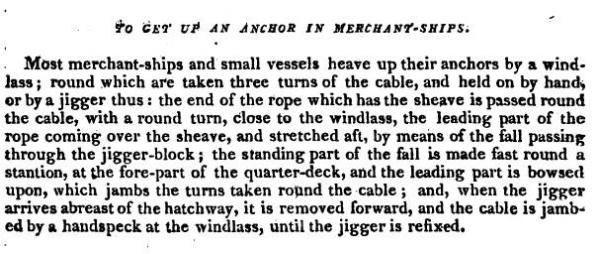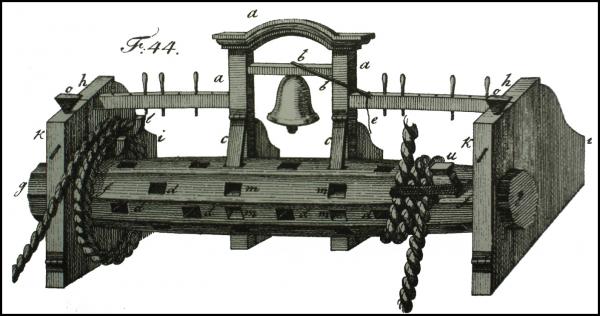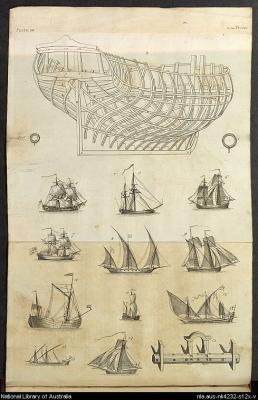-
Posts
3,156 -
Joined
-
Last visited
Content Type
Profiles
Forums
Gallery
Events
Everything posted by trippwj
-
Very nice, Sjors. I think the glass in the third window from the right is smudged - you may need to clean that one. That bulkhead looks very nice - almost seems a crime somehow to hide those cannon below another deck!
- 1,616 replies
-
- caldercraft
- agamemnon
-
(and 1 more)
Tagged with:
-
Since the scales for model building are given in a couple of ways (1/8" scale or 1:96 scale) it sometimes becomes necessary to find the ration (1:96) from a fractional inch (1/8"). The method Stuntflyer shows takes the fraction (1/8) does the division to get a decimal (0.125). Since 0.125" = 1 foot at scale, and not sure why this works but it does, divide 12 inches per foot by the decimall (0.125) to get the ratio 1:96 (1 inch scale = 96 inches real). Also works for other scales - 1/4"=1 foot becomes 12/0.25 = 1:48 3/32"=1foot becomes 12/0.9375 = 1:128 1/16" = 1 foot is 1:192 1/2" = 1 foot is 1:24 and so on. This may not work as neatly when converting metric - haven't attempted that part yet!
-
In The Oxford Companion to Ships and the Sea (Peter Kemp, editor - 1976), there is a definition: a name sometimes given to the bollards which line a quay or wharf and to which ships lying alongside secure their hawsers. The name may have its origin from the fact that bollards are usually painted black... Falconer (1784 edition) does not use the term nigger head.
-
I am still looking through my various and sundry pdf files (regrettably, most are scanned images of the pages so not searchable without running an OCR on them, which for some of these would take longer than skimming!), and came across the following from Blunt's Seamanship both in Theory and Practice...published in 1813. (available on Google Books at http://books.google.com/books/about/Seamanship_both_in_theory_and_practice.html?id=cPpOAAAAYAAJ )
-
In the most basic way of looking at it, 5/32" = 1 foot is the same as 5/32"=12". Rearranging you get 5" = (12 x 32) or 5" = 384" which gives about 1"=76.8" (or 1:76.8). What the 1:x gives is how many units (in this case inches) at full size are represented by 1 inch at scale size. Also works for mm, cm, cubits etc.
-
Not sure on all the aspects of the windlass above - generally, from what I have read, only 2 crew members operated the capstan. When you look at the Capstan, the holes in the upper part above the barrel are where the poles are inserted and the crew members (the number per pole and number of pole depended on the size of the ship) would walk around the capstan pushing on the poles. There would generally be a hole in both the pole and the capstan for a pin to be inserted to lock the poles in place to avoid them slipping out during use. Still doing some more digging into older references as time allows - I'm sure that somewhere in one of the documents I have on seamanship &c. there is a description of operating the windlass.
-
For the time period of the Hannah, you may want to take a look at Falconer's An Universal Dictionary Of The Marine - the figure below is from the 1780 edition. There are several sources where you can view or download on-line, including http://southseas.nla.gov.au/refs/falc/title.htmland https://archive.org/details/universaldiction00falc
-
17th Century Dutch Merchant Ships by Ab Hoving (2014) from Sea Watch Books (ISBN 978-0-9904041-1-8) http://www.seawatchbooks.com/114003 Following is from the publisher’s website: By the end of the 17th century, the Netherlands was the preeminent trading country in Europe. Their ships were to be found everywhere on the world’s oceans, seas and rivers. Most of this trade was carried in the hulls of smaller craft and not in the large “Retour” ships of the Dutch East India Company. Ab Hoving, a master modeler and the “dean” of Dutch maritime history, has selected ten types of these ships for his new book. Ab has authored the text, Herbert Tomesen has built models of each of these ships, Cor Emke has drawn plans for each of the ships and Emiel Hoving, Ab’s son, has taken all of the photos and designed the book. This book and the accompanying “Plans Portfolio” of 24 sheets, in ¼ or 1/8 scale depending on the size of the ship, has something for every modeler. Pick your favorite building method, the size and complexity of the ship you want to build, and you are ready to cut wood. Besides being a treasure trove for ship modelers, this work helps document the merchant ships of one of the world’s greatest sailing nations. The color work and computer graphics in this book is spectacular, and all lovers of ships will find something intriguing for them.
-
Looking good. Are you putting in actual eye splices???
- 1,616 replies
-
- caldercraft
- agamemnon
-
(and 1 more)
Tagged with:
-

HM Mermaid Rigging questions (edited by admin)
trippwj replied to Rick01's topic in Masting, rigging and sails
The State Library of NSW has posted on-line the Phillip Parker King - album of drawings and engravings, 1802-1902. Each image can be viewed in very large detail (see my link on the previous page for one example. The description and image thumbnails can be found here: http://www.acmssearch.sl.nsw.gov.au/search/itemDetailPaged.cgi?itemID=442570 A very detailed sketch is here http://www.acmssearch.sl.nsw.gov.au/search/itemLargeCopyright.cgi?itemID=921633&size=full&album=1&collection=823393&parent=442570(higher resolution image of one shown in the first post by Rick) -

HM Mermaid Rigging questions (edited by admin)
trippwj replied to Rick01's topic in Masting, rigging and sails
For an even larger photo see http://www.acmssearch.sl.nsw.gov.au/search/itemLargeCopyright.cgi?itemID=921634&size=full&album=1&collection=823393&parent=442570 -
Amazing work - she is a beautiful ship! Congratulations on a job much more than well done!
-
Not sure if the following is of any use, but here is an extract from Humphrey's Dimensions and sizes for materials for building a Frigate of 44 guns of August, 1794. Wing transom 29 feet long in the aft side moulded and sided 22 inch to round up and aft 6 inches all the other sided 14 inches. The lower deck transom moulded as broad as can conveniently be had for the better securing the ends of the deck plank 2 bolts of 1 1/8 inch diameter in the deck transom and above it, all below bolted with one bolt of 1 ¼ inch diameter. Fashion pieces 2 pair sided 12 inches and moulded 15 inch on the cant as hereafter directed Inner post to be 12 inch fore and aft to run from the trans to the keel to be of live oak sided at the head from 20 to 24 inches and at least 12 inches Sternpost 18 inches square at the head sided 17 inches below by 3 ½ feet fore and aft including false post, and 10 inches thick on the aft side, at the keel to be fitted for a crooked headed rudder.
-
Both are definitely by Goodwin. I have one (The Construction and Fitting of the English Man of War 1650-1850) but not the other. There is a 10 year difference in the copyright dates (1987 for the English Man or War. 1997 for the Sailing Man of War), but the on-line description is sorely lacking for the latter book. When I get a moment, I'll dig into some of my archives and see if there are any reviews in Mariner's Mirror or the NRJ.
-
Coming along quite nicely, Popeye. Will there be beverages icing down in the icemaker as well?????
- 956 replies
-
- andrea gail
- trawler
-
(and 1 more)
Tagged with:
-
Dang - I just saw this picture somewhere...now if I could only remember where......
-
Greetings, Grandad, and I have no direct experience with the Bluejacket Conny, but have heard good things about it. The model has a solid reputation for accuracy, Note that it has a solid hull below the gundeck and is more POF above the gundeck level. I have only found a couple of build logs here for it, though. Good Luck!
About us
Modelshipworld - Advancing Ship Modeling through Research
SSL Secured
Your security is important for us so this Website is SSL-Secured
NRG Mailing Address
Nautical Research Guild
237 South Lincoln Street
Westmont IL, 60559-1917
Model Ship World ® and the MSW logo are Registered Trademarks, and belong to the Nautical Research Guild (United States Patent and Trademark Office: No. 6,929,264 & No. 6,929,274, registered Dec. 20, 2022)
Helpful Links
About the NRG
If you enjoy building ship models that are historically accurate as well as beautiful, then The Nautical Research Guild (NRG) is just right for you.
The Guild is a non-profit educational organization whose mission is to “Advance Ship Modeling Through Research”. We provide support to our members in their efforts to raise the quality of their model ships.
The Nautical Research Guild has published our world-renowned quarterly magazine, The Nautical Research Journal, since 1955. The pages of the Journal are full of articles by accomplished ship modelers who show you how they create those exquisite details on their models, and by maritime historians who show you the correct details to build. The Journal is available in both print and digital editions. Go to the NRG web site (www.thenrg.org) to download a complimentary digital copy of the Journal. The NRG also publishes plan sets, books and compilations of back issues of the Journal and the former Ships in Scale and Model Ship Builder magazines.





